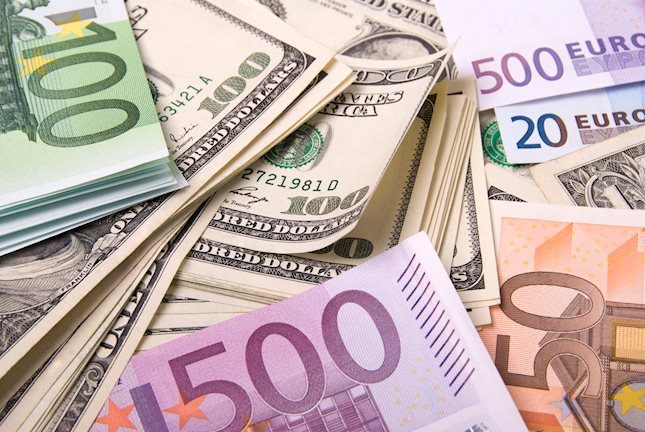Research Team at HSBC notes that the Eurozone inflation is rising sharply, and the hawks might start asking for an early tapering of QE but Mr Draghi made a shrewd move in December, announcing an extension of QE to at least end-2017 and with underlying inflation subdued, HSBC doubt the ECB will be bowing to pressure just yet.
Key Quotes
“In December, Eurozone inflation climbed to 1.1% y-o-y, the highest level in over three years. There is more to come, and we think Eurozone inflation could reach 1.8% by February (even higher in some countries, such as Germany). With growth picking up, some of the more hawkish members of the ECB Governing Council may start to call for tapering QE as early as the 19 January meeting.”
“However, the majority of the Governing Council remain worried about muted underlying price pressures, despite the rise in headline inflation. Core and services inflation remain around 1%. As noted recently by ECB board member Ives Mersch – typically at the more hawkish end of the spectrum within the ECB Governing Council – wage growth is still too weak in the Eurozone. The ECB will also be wary of tightening monetary policy too soon, repeating the mistake of 2011 when it hiked rates, helping to curb the fragile recovery.”
“Perhaps anticipating the hawkish calls, the ECB announced in December a nine-month extension of QE – albeit at a slower purchase pace – until the end of 2017. At that time, although the oil price had already increased significantly, it was not yet reflected in the ECB inflation forecast, meaning it still projected a meaningful undershoot of its "close to but below 2%" target.”
“All in all, we think that the ECB will be on hold in January, and indeed in the coming months, looking through the inflation peak in the first half of next year before having to make a decision on the possible future of QE. And given that we think underlying inflation will remain stubbornly low, in our view QE will continue at EUR60bn per month until the end of the year, and then at a slower pace (EUR40bn per month) from January 2018.”
Information on these pages contains forward-looking statements that involve risks and uncertainties. Markets and instruments profiled on this page are for informational purposes only and should not in any way come across as a recommendation to buy or sell in these assets. You should do your own thorough research before making any investment decisions. FXStreet does not in any way guarantee that this information is free from mistakes, errors, or material misstatements. It also does not guarantee that this information is of a timely nature. Investing in Open Markets involves a great deal of risk, including the loss of all or a portion of your investment, as well as emotional distress. All risks, losses and costs associated with investing, including total loss of principal, are your responsibility. The views and opinions expressed in this article are those of the authors and do not necessarily reflect the official policy or position of FXStreet nor its advertisers. The author will not be held responsible for information that is found at the end of links posted on this page.
If not otherwise explicitly mentioned in the body of the article, at the time of writing, the author has no position in any stock mentioned in this article and no business relationship with any company mentioned. The author has not received compensation for writing this article, other than from FXStreet.
FXStreet and the author do not provide personalized recommendations. The author makes no representations as to the accuracy, completeness, or suitability of this information. FXStreet and the author will not be liable for any errors, omissions or any losses, injuries or damages arising from this information and its display or use. Errors and omissions excepted.
The author and FXStreet are not registered investment advisors and nothing in this article is intended to be investment advice.
Recommended content
Editors’ Picks

EUR/USD clings to daily gains near 1.0300 after US PMI data
EUR/USD trades in positive territory at around 1.0300 on Friday. The pair breathes a sigh of relief as the US Dollar rally stalls, even as markets stay cautious amid geopolitical risks and Trump's tariff plans. US ISM PMI improved to 49.3 in December, beating expectations.

GBP/USD holds around 1.2400 as the mood improves
GBP/USD preserves its recovery momentum and trades around 1.2400 in the American session on Friday. A broad pullback in the US Dollar allows the pair to find some respite after losing over 1% on Thursday. A better mood limits US Dollar gains.

Gold retreats below $2,650 in quiet end to the week
Gold shed some ground on Friday after rising more than 1% on Thursday. The benchmark 10-year US Treasury bond yield trimmed pre-opening losses and stands at around 4.57%, undermining demand for the bright metal. Market players await next week's first-tier data.

Stellar bulls aim for double-digit rally ahead
Stellar extends its gains, trading above $0.45 on Friday after rallying more than 32% this week. On-chain data indicates further rally as XLM’s Open Interest and Total Value Locked rise. Additionally, the technical outlook suggests a rally continuation projection of further 40% gains.

Week ahead – US NFP to test the markets, Eurozone CPI data also in focus
King Dollar flexes its muscles ahead of Friday’s NFP. Eurozone flash CPI numbers awaited as euro bleeds. Canada’s jobs data to impact bets of a January BoC cut. Australia’s CPI and Japan’s wages also on tap.

Best Forex Brokers with Low Spreads
VERIFIED Low spreads are crucial for reducing trading costs. Explore top Forex brokers offering competitive spreads and high leverage. Compare options for EUR/USD, GBP/USD, USD/JPY, and Gold.